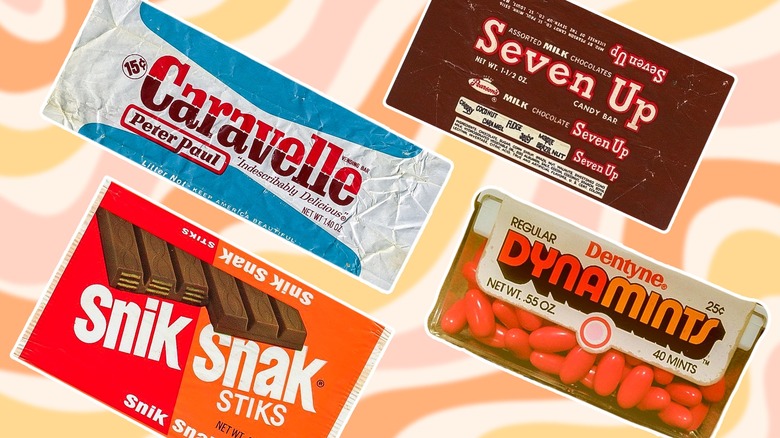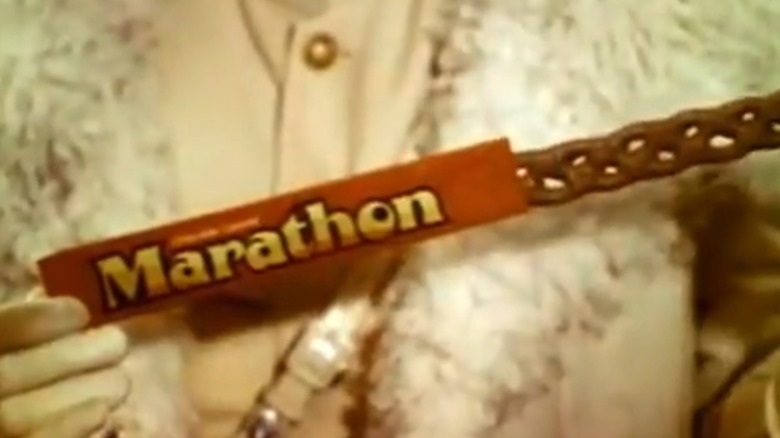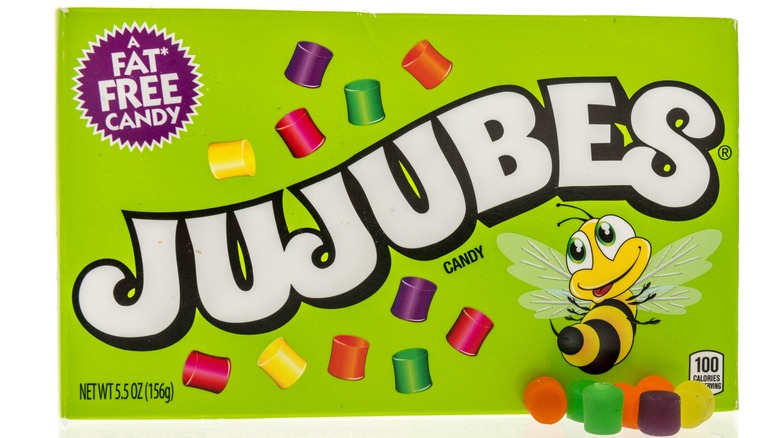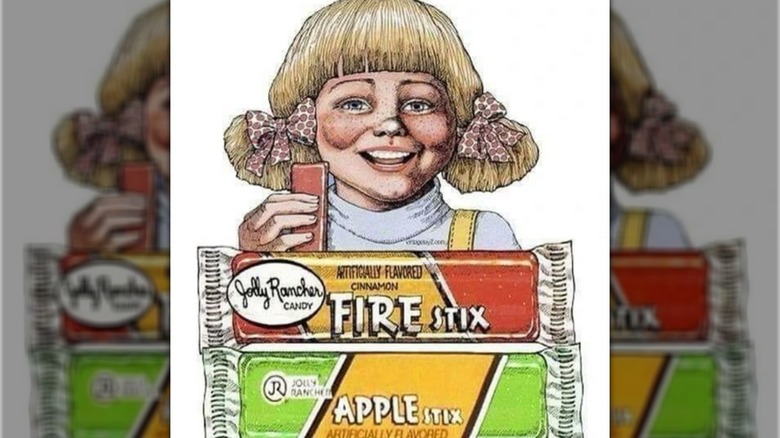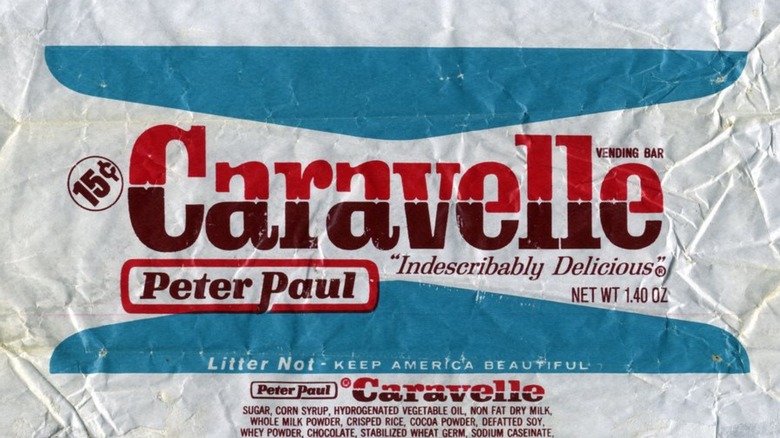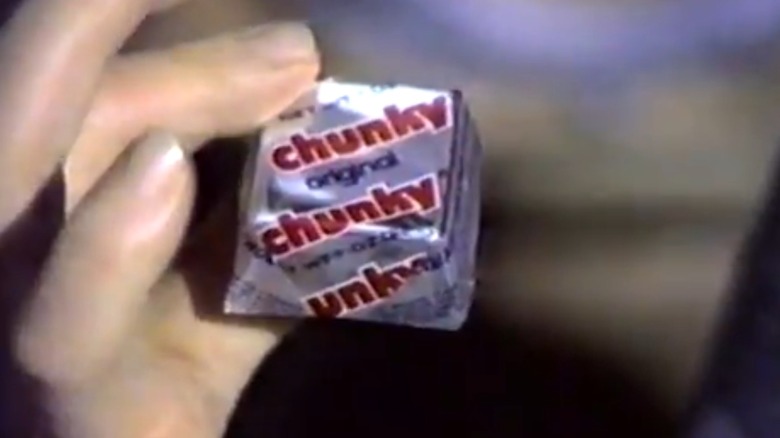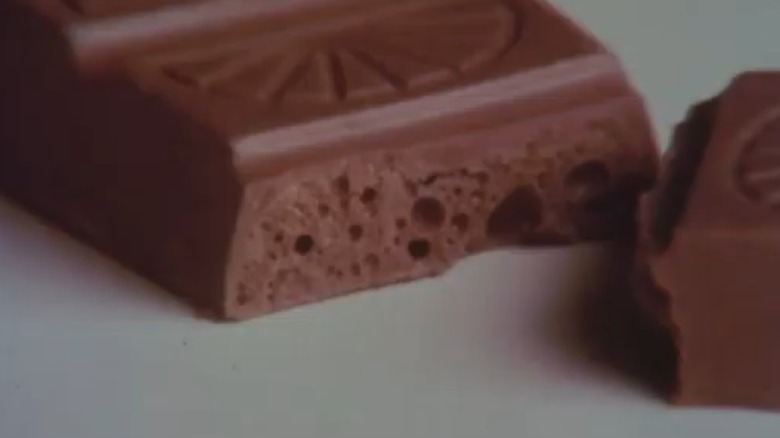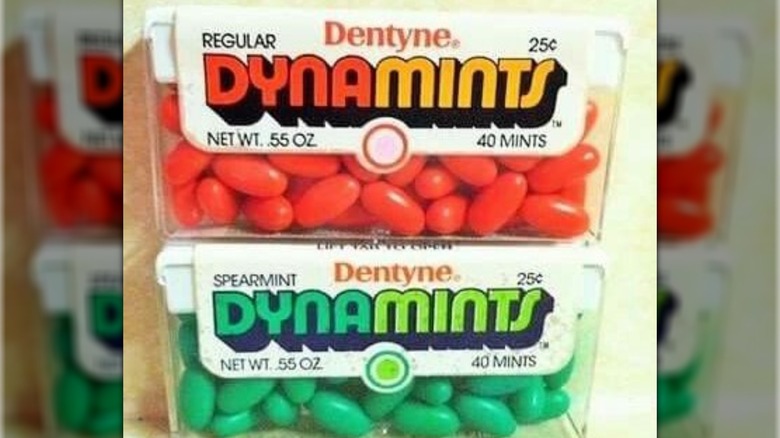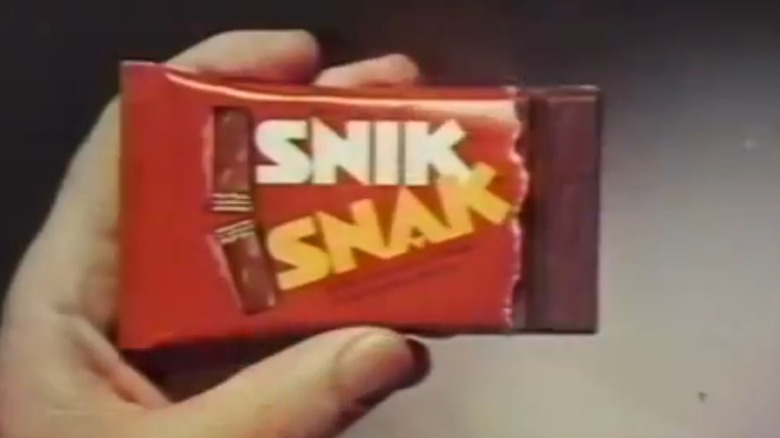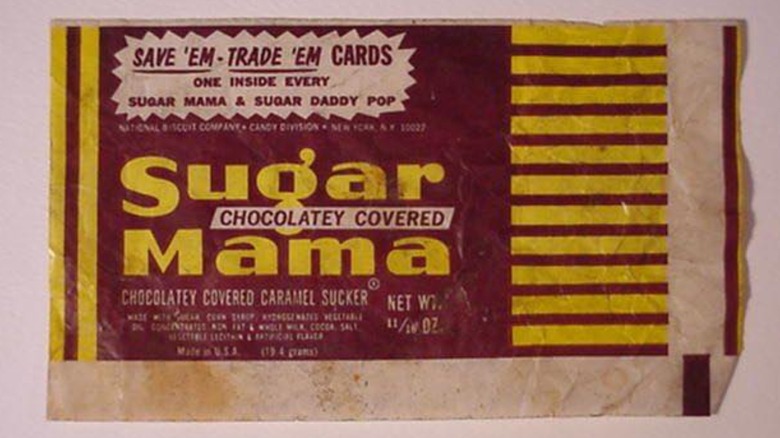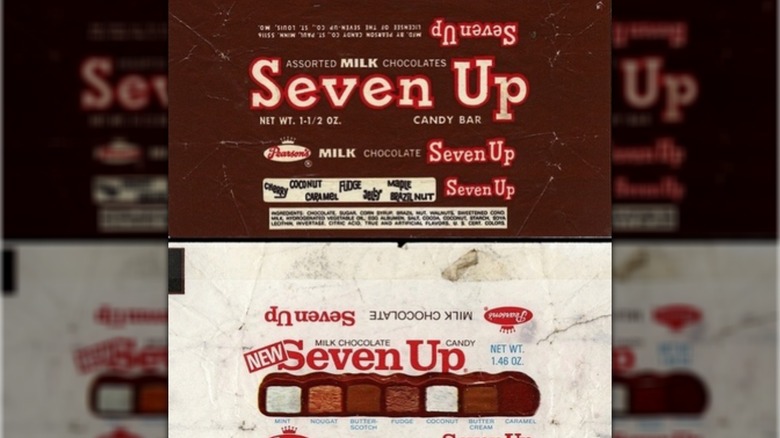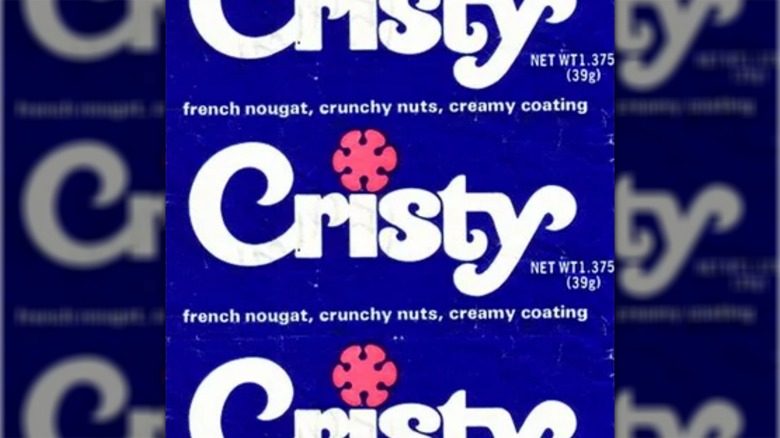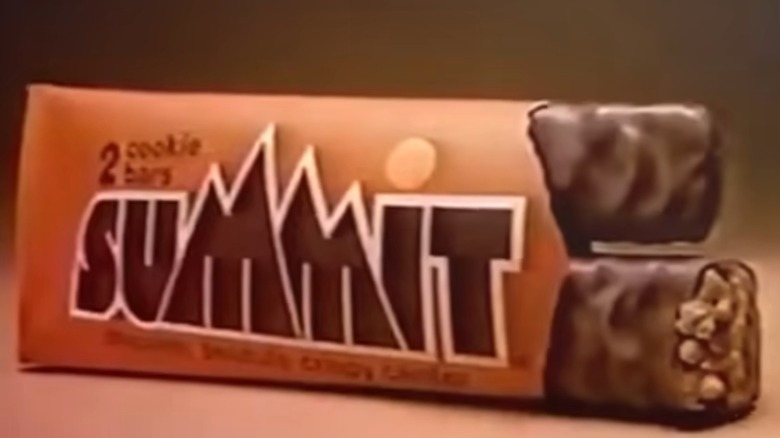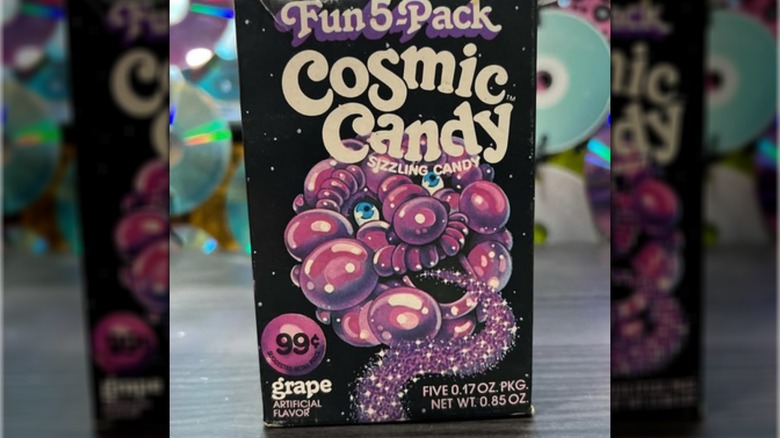12 Classic Candies From The '70s We Wish We Could Have Back
We may receive a commission on purchases made from links.
The sight of a long-lost favorite candy bar from childhood can bring back a flood of memories. While many nostalgia-focused websites and YouTube channels can give you a visual glimpse of the wrapper, nothing beats actually getting your hands on that candy and being able to take another bite. Some candy companies have obliged and brought back classics over time like Astro Pops and the Reggie! bar, but others remain lost to history.
That doesn't mean that, if you haven't seen your favorite in a while, you should assume the candy is no longer available. Some candy makers have reduced the market they sell in to certain regions, and you can check online to see if any candy stores will ship your favorite products to you. However, many candies really faded away, either due to changing tastes and poor sales, or in some cases, legal issues. Candies come and go each decade, but there are some that were popular back in the 1970s that stand out among the crowd. Here's a look at 12 classic candies from the '70s we wish we could have back.
Marathon Bar
The Marathon bar, introduced in 1973, was one of the more unique candy bars because of its shape: an 8-inch braid of chocolate-covered caramel. The wrapper even had ruler markings drawn on one edge (Did anyone actually try to use that wrapper-ruler after finishing the candy?), and the name was meant to describe how long it would take to finish the bar. It did take a while because that caramel was thick and chewy, and people joked about having to be careful of dental work when eating the candy. However, the bar didn't sell that well, and by 1981, Mars pulled the candy from stores.
This is the point where most websites and people online would point out that Cadbury released a similar bar three years earlier called Curly Wurly, which is still available in the U.K. The two bars are almost identical, but according to Marathon fans who've tried Curly Wurly, the caramel in a Marathon bar was thicker (and there was more of it). You'll occasionally see comments that someone recently saw Marathon bars in this or that restaurant or candy store, but there's never any follow-up confirming the sighting.
One thing to note is that a Marathon bar was recently sold in stores. The British version of what the U.S. calls Snickers used to be called Marathon, but it was renamed Snickers in 1990 to make the brands consistent between countries. In 2024, Mars announced a limited-edition rebranding back to Marathon.
Jujubes
Speaking of candy that was the arch enemy of dental work, Jujubes were also a major memory for many from the '70s. The small, flat-topped gumdrops were so chewy and stiff that, once you managed to bite into one, you could temporarily glue your jaw together until the candy softened. Then, you had to deal with the newly softened candy sticking to all your teeth for several minutes.
Jujubes were the younger sibling of Jujyfruits, the much softer, fruit-shaped candies. Jujubes had actually been around for several decades by the time the 1970s rolled around; the candy was first introduced in the 1920s by the Heide company. They were very popular and survived major sales and mergers (Hersheys bought Heide in 1995, Farley & Sathers bought the rights to Heide candies in 2002, and then Farley & Sathers merged with Ferrara Pan in 2012). However, the candies were finally discontinued in the early 2020s. You may still find online listings for Jujubes, but links lead nowhere and pages have no Jujubes for sale.
Full-size Jolly Rancher Stix
Yes, Jolly Rancher candy is still available, and you can even find versions labeled as "stix." However, you're not going to find the Holy Grail of Jolly Rancher candies, which were the longer stix sold in the 1960s, 1970s, and 1980s. These were glass-like slabs with ends you could gradually shape into sharp edges, breaking sections off that would stick to the roof of your mouth — or your teeth, as these were yet another candy that would damage dental work and bind your jaw together.
The flavors were memorable. Some were basic yet intense, such as apple and watermelon. In the 1970s, the cinnamon Fire Stix was one of the most popular flavors, which isn't a surprise because that's the flavor that got the whole candy ball rolling. Back in the 1950s, Dorothy and Bill Harmsen ran an ice cream store in Golden, Colorado, that they named Jolly Rancher. They sold candy as well, mostly from other manufacturers, but the Harmsens had created their own recipe for a hot cinnamon taffy stick. It was so popular that they moved into candy manufacturing. Unfortunately, the longer stix eventually disappeared, although some longer versions of a couple of flavors sold online several years ago. Those are now out of stock, too.
Caravelle
A number of candy bars started life as direct competition to other candy bars with similar ingredient combinations, but enough of a difference in taste, texture, and appearance to avoid copyright issues. Caravelle, from the Peter Paul Candy Company, wasn't the competition. However, it was outlasted by a competitor that, according to Caravelle fans, wasn't even close in terms of flavor and texture.
Caravelle started off its short life in 1965 only to be challenged by the introduction of the $100,000 bar in 1966 (That's now known as the 100 Grand bar). Both bars had caramel centers wrapped in chocolate with crispy rice, but Caravelle had a better texture and softer caramel. You'd think that a bar with such a description would have had a longer life, but no. It was discontinued around the end of 1977 or beginning of 1978, and it's not known whether the reason was a shelf-life issue — that could just be a rumor — or the fact that Cadbury Schweppes bought Peter Paul around that time, too. It wouldn't be unusual for a new owner to revamp a newly acquired company's line of products.
Plain chocolate and pecan Chunky flavors
Chunky bars are still available. It may be a regional product in brick and mortar stores, but you can still find Chunky bars online no matter where you are. However, this flavor of Chunky contains raisins and peanuts (kind of like a chocolate bar version of trail mix), and it isn't the original. In fact, the bar has been available in a few flavors that no longer exist. Two of these that we wish would come back are the pecan Chunky and the plain chocolate Chunky, which were available in the 1970s and 1980s.
Chunky has been around in one form or another since the 1930s. In the 1970s, it was literally a chunk of chocolate, though it was later reshaped in the 1980s into a thick square with four segments that were easier to break apart. The original chunk form was the basis for much of its marketing using the slogan, "Tastes Thickerer."
Choco'Lite
Choco'Lite was an "aerated" bar, meaning that its center had a honeycomb-style texture that was most often described as "bubbly." The bar was divided into segments, and each segment had an imprint of what looked like a stylized cross-section of an orange half. The filling contained honey and something the Nestle company called crispy chips. Choco'Lite was most often compared to the Aero bar, a U.K. candy bar that was similar but that did not contain honey or those crispy chips.
Choco'Lite was introduced around 1971 or 1972 and was sold for about 10 years. It actually wasn't the first aerated bar in the U.S.; Nestle had tried selling one called Bubblo back in the 1930s, which also contained honey. The mere mention of Choco'Lite can start off rounds of people happily reminiscing about the bars and how they wish it would come back. It was very popular, so it's kind of a surprise that it was discontinued. Any nostalgia candy companies looking for a new-old recipe to bring back might want to consider this one.
Dynamints
Dynamints were the slightly stronger cousin of Tic-Tacs, and both were pretty much copies down to the type of dispensers they came in. The only differences were that the Dynamints container was wider than it was tall, while the Tic-Tac container was taller than it was wide. Plus, the Dynamints themselves were a little sleeker, a little bigger, and shaped more like softgels than Tic-Tacs.
Dynamints were from the Dentyne company, which also made gum. The mints were very popular and remained available in the 1980s, but by the 1990s, they were no more and it's not known why. One of the more interesting features was that Dynamints had a flavor called "regular," with no hint of what the flavor was like except for the fact that the candies were colored red (Online comments noted that the regular flavor was cinnamon). Some of the flavors were combinations, such as the much-missed fruit flavor that was a mix of orange, cherry, and grape.
Snik Snak Stiks
Remember back in the Caravelle section when we said that some candy bars were meant to be competition for another bar, and they usually had enough differences to avoid copyright issues? M&M/Mars pushed that to the limit with this next entry. The company created Snik Snak Stiks in 1973 as a way to compete with Kit Kat bars from Hershey, and let's just say the similarities are very interesting.
Not only were Snik Snaks shaped the same — the only difference being that Snik Snaks had six sticks instead of the four you'd find in a Kit Kat package — but the name also used the same format (Kit Kat, Snik Snak), and even the tagline in commercials and ads was almost the same. Kit Kat had been using, "Have a break, have a Kit Kat," and M&M/Mars decided the tagline for Snik Snak would be, "Take a break, take a Snik Snak." Additionally, Snik Snaks were chocolate-covered wafer sticks that looked a lot like smaller Kit Kats. Snik Snaks were not meant for this world, however, lasting fewer than six years.
The original chocolate-covered Sugar Mama caramel pop
Anyone who's spent time in a candy aisle has likely seen Sugar Babies, those yellow and red bags of candy-coated caramel pastilles. Maybe you've found Sugar Daddies, the original member of the Sugar family. These are rectangular, pure caramel lollipops that are normally available in a small size that's just a couple of inches long. If you're lucky, you've seen the giant Sugar Daddies, which are slabs of caramel straight out of any caramel fan's happiest dream.
For a time, there was a third member of the family: Sugar Mama. This was a caramel pop similar to the smaller Sugar Daddy but coated in chocolate. She was the last to be introduced; Sugar Daddy was first manufactured under another name from 1925 to 1932 (after which it got its current name), and Sugar Babies were introduced in 1935. Sugar Mama came along in 1965 but was discontinued in the 1980s. It's not clear why, although theories include the fact that it just wasn't interesting to people's changing tastes and that the packaging was just different enough so that people didn't realize it was part of the Sugar family.
Several years ago, a new version of Sugar Mama appeared, but these were small caramels in a wrapper with no stick, more like regular caramel soft candy. It appears to be no longer available.
Seven Up Bar
If you were waiting to find out which '70s candy got knocked out of the ring by legal issues, this is it. The Seven Up bar (sometimes abbreviated by customers as 7-Up, although it wasn't related to the soda) had seven sections with different fillings. That's seven flavors in one bar, and it was a unique creation. The flavors were mint, nougat, butterscotch, caramel, butter cream, fudge, and coconut — basically, something for everyone. This bar sounds great for sharing.
The bar was introduced in the 1930s, and it remained popular throughout the 1970s. Alas, the very descriptive name was also the main cause of the bar's demise. It was relatively expensive to produce, and rising costs made it harder to keep up production. The name was also the subject of a trademark dispute with the company that owned 7Up soda. Even though the bar had been around since the 1930s and was obviously not soda-flavored, 7Up had been around since the 1920s, and the trademark dispute couldn't be resolved. There was a similar bar from Necco called the Sky Bar, which had four filled segments, but it was discontinued in 2018 before being brought back by a smaller company a few years later.
The Cristy Bar
The Cristy bar is one of those candies that, if you go by the amount of information that's easily available, was one of the most obscure bars ever released. If you ask people who were around in the early and mid 1970s, they'll tell you about stopping at the store each week to buy a Cristy bar. People remember this bar, but for some reason, there's not much info out there.
The Cristy bar — originally spelled Christy before being renamed — was introduced in 1969 by Concorde Confections. It was a bar of French nougat with nuts mixed in, and the whole bar was coated with a creamy candy layer. It was available for only a few years, and its packaging was fairly memorable because it included a picture of a smiling blonde girl when that style of packaging wasn't common. Some have said the Zero candy bar tastes similar, but according to comments online, the two aren't quite the same.
Summit
Summit cookie bars are another candy that didn't last very long, but in this case, the reasons were obvious. Summit was a wafer-style candy bar with a peanut filling, wafers, and chocolate coating. It was introduced in 1977 by Mars and shaped sort of like a Twix bar, with two to a package. Sounds great to eat, at least flavor-wise.
While people initially liked the bar and its wafer center, there were some who weren't thrilled with the peanuts. The major issue, though, was that the chocolate melted quickly, making the bars messy to eat. They'd even melt in the package, making storage an issue. Freezing the bars in hopes of making the chocolate less melty led to tough bars that were basically inedible until they thawed (and that likely means the chocolate would melt again). Mars tried increasing the chocolate and decreasing the amount of wafers and removing the peanuts. Reviews of the new version were mixed and not that great overall, with some people not really tasting a difference. The Summit bar was discontinued by the mid-1980s.
Space Dust/Cosmic Candy
Later renamed Cosmic Candy, Space Dust was a sibling product to Pop Rocks. Both were invented by the same person, and the two candies really weren't in competition because they were different. Space Dust was pretty much a powdered version of Pop Rocks.
Space Dust was introduced in 1978, and it became popular on the East Coast of the U.S. One of the candy's distinguishing features was the packaging, which featured trippy art in colors that were related to the flavor (such as purple for grape-flavored Space Dust). The artist who created the package graphics for Space Dust, by the way, was Doug Johnson, who also created the album cover art for some of Judas Priest's albums.
Space Dust quickly encountered some criticism because of its name. Parents thought it was too close to the name of the drug, "angel dust," and General Foods agreed, changing the name to Cosmic Candy. Unfortunately, the candy hit another road block when rumors emerged in 1979 that eating popping candy like Pop Rocks while drinking soda would cause your stomach to explode. As unlikely as that sounded, the rumors did lead to Pop Rocks and other popping candy falling out of favor by the early 1980s. Pop Rocks was revived in the 2000s, but Cosmic Candy is no more.
Static Media owns and operates The Daily Meal and Chowhound.
